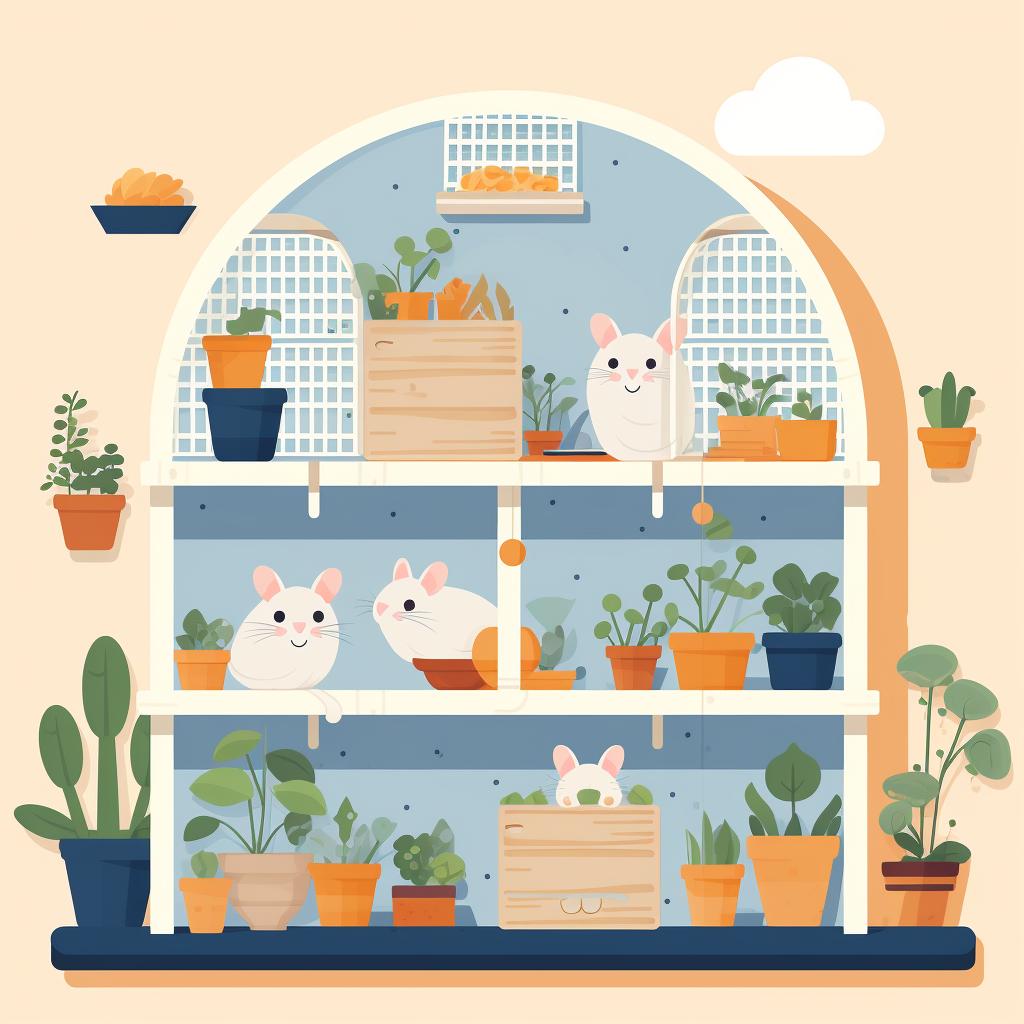As a dedicated pet shop owner specializing in hamsters, Cory Thiel brings a wealth of expertise to our readers. His passion for these small creatures is reflected in his insightful advice on selecting the ideal hamster and creating the perfect environment for them. With his vast experience and love for these furry friends, he offers authoritative guidance for both new and seasoned hamster owners.
Yes, hamsters do require a good amount of space to live happily and healthily. The size of the cage or habitat is crucial to their well-being. A small, cramped cage can lead to stress, obesity, and other health issues. Let's dive into the details of this important aspect of hamster care.
Let's Dive Into Your Hamster's Space Needs 🐹
Hamsters are active creatures. They love to explore, run, play, and burrow. The minimum recommended cage size for a hamster is 450 square inches of uninterrupted floor space, but the larger the better. Dwarf hamsters, despite being smaller, also need ample space due to their active nature.
Hamster Space Requirements Quiz
Test your knowledge on the space requirements and best practices for hamster care.
Learn more about 🐹 Hamster Space Requirements Quiz 🐹 or discover other Hamster Now quizzes.
When it comes to enriching your pet's environment, it's not just about the size of the cage. The layout and contents of the cage also matter. This includes hamster bedding essentials, toys, and hideouts.
Picking the Perfect Palace for Your Hamster 🏰
There are many options when it comes to selecting the best hamster cage. From wire cages to glass tanks and bin cages, the choice depends on your hamster's needs and your living situation. Remember, the cage should be well-ventilated, easy to clean, secure, and large enough for your hamster to explore.
Top-Rated Hamster Habitats for Happy Pets
It's also important to consider the type of hamster you have. Winter white dwarf hamster habitats may differ slightly from robo dwarf hamsters care requirements or russian dwarf hamsters care needs. For more information on this, refer to our guide on creating an ideal cage for a dwarf hamster.
Creating a Cozy Corner: Setting Up Your Hamster's Habitat 🛠️
Once you've chosen the cage, it's time to set it up. Start with a thick layer of bedding for your hamster to burrow in. You can then add toys, a wheel, hiding spots, and food and water containers. Remember to arrange these elements in a way that maximizes the use of space.
Let's dive into the process of setting up your hamster's cage. Here's a step-by-step guide to help you create a comfortable, enriching environment for your furry friend.
Learn more about 🐹 Creating a Comfortable Hamster Habitat: A Step-by-Step Guide 🏠 or discover other Hamster Now guides.
Once you've set up your hamster's cage, remember that regular cleaning is crucial to maintaining a healthy habitat. Depending on the cage size and your hamster's habits, you may need to clean the cage once a week or every few days.
Regular cleaning is also crucial to maintaining a healthy habitat. Depending on the cage size and your hamster's habits, you might need to clean the cage every week or every few weeks. Check out our article on how often you should clean a hamster cage for more information.
Wrapping Up: The Key to Your Hamster's Happiness 🗝️
So, do hamsters require a lot of space? Absolutely. Providing your hamster with a spacious, well-equipped habitat is one of the best things you can do for their health and happiness. It might require a bit more effort and investment, but seeing your hamster thrive is worth it.
What type of cage do you use for your hamster?
Choose the type of cage you use for your hamster. Your response will help other hamster owners make informed decisions.
Remember to consult with a vet or a hamster expert if you have any doubts about your hamster's housing. With the right care, your pet can lead a long, happy, and healthy life.



































